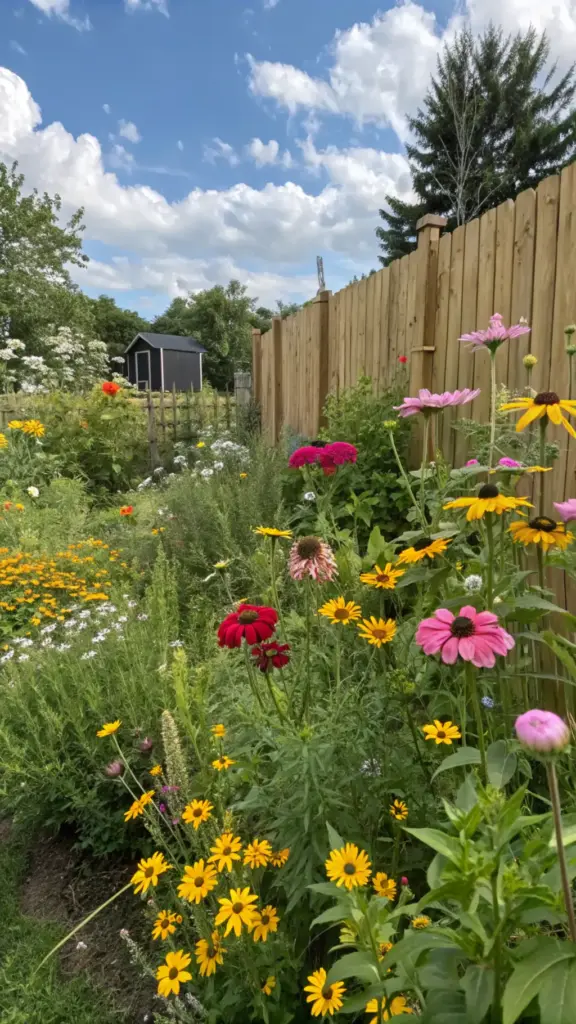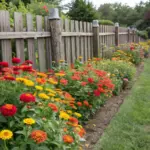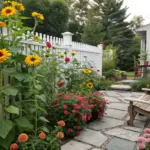10. Mini Meadow Garden: Creating Your Own Slice of Wild Paradise

Let me tell you about my journey creating a mini meadow garden – it’s been one of the most rewarding (and surprisingly easy!) projects I’ve tackled in my 20 years of gardening. When I first started, I thought achieving that perfect wild-yet-maintained look would be impossible, but I’ve learned some game-changing tricks along the way.
Getting Started with Seed Selection
The secret to a stunning mini meadow starts with your seed mix. I learned this the hard way after my first attempt looked more like a weed patch than a meadow! Now I always start with zinnias as my anchor flowers – they’re absolute champions at providing consistent color. I typically mix in native wildflowers like black-eyed susans, coneflowers, and cosmos.
Pro tip: Don’t go overboard with too many varieties at first. Start with 5-7 different types of flowers and observe what works best in your space. I’ve found that a mix of 60% zinnias and 40% other wildflowers creates that perfect meadow aesthetic.
Creating Natural-Looking Paths
Remember when I mentioned learning things the hard way? Well, my first meadow garden was basically impenetrable! Now I know better. I create meandering paths using these techniques:
- Lay down cardboard first where you want your paths
- Cover with wood chips or pea gravel
- Make paths at least 24 inches wide for comfortable walking
- Add stepping stones for visual interest
Adding Height and Structure
One thing that really elevated my mini meadow was incorporating different heights. I plant tall native grasses like little bluestem or fountain grass toward the back, medium-height zinnias in the middle, and shorter flowers in the front. This creates what I like to call nature’s stadium seating.
Rustic Seating and Focal Points
Every meadow needs a place where you can sit and soak it all in! I’ve experimented with various rustic seating options, and here’s what works best:
- Weather-resistant wooden benches
- Repurposed log sections as natural stools
- Simple stone benches that age beautifully
- Adirondack chairs painted in earth tones
Maintenance Tips for Success
Here’s something most people don’t tell you – a mini meadow garden actually requires less maintenance than a traditional garden! I spend about 30 minutes a week maintaining mine. The key is to:
- Water deeply but infrequently to encourage deep root growth
- Allow plants to self-seed for next year
- Cut back only once at the end of the season
- Leave some plant stalks standing for winter interest and wildlife
I’ve found that the best time to start a mini meadow is in early spring after the last frost. My current meadow took about 8 weeks to really start showing its personality, but now it’s a gorgeous tapestry of colors that changes throughout the season. Plus, it’s become a haven for pollinators – I counted 12 different butterfly species last summer!
Remember, the beauty of a mini meadow garden lies in its imperfection. Don’t stress if things don’t look perfectly manicured – that’s exactly the point! Just make sure you follow local regulations about plant height and maintenance, and you’ll be well on your way to creating your own slice of wild paradise.
Conclusion
Ready to transform your yard into a zinnia paradise? These garden bed ideas are just the beginning of what you can create! Remember, the key to success is choosing varieties that match your vision and maintaining proper spacing for healthy growth. Why not start planning your dream zinnia garden today? Your perfect outdoor oasis awaits!










GIPHY App Key not set. Please check settings